First Lieutenant Ernest Kelly Shaw
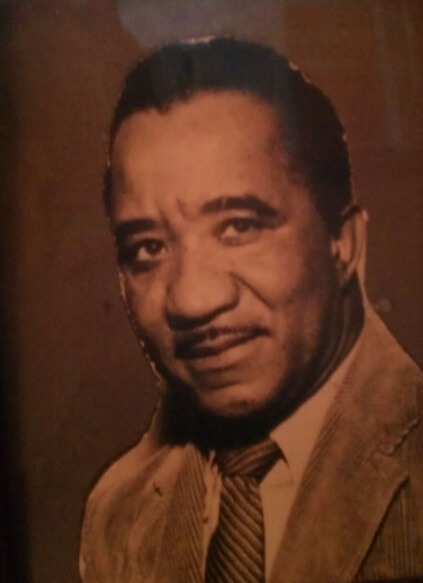
- Unit: A Company, 3rd Platoon, 1st Battalion, 31st Infantry Regiment, 7th Infantry Division
- Date of Birth: August 29, 1926
- Date of Death: April 25, 2016
- Hometown: Terrell, Texas
- Place of Death: Houston, Texas
- Award(s): Silver Star
- Cemetery: Section M2, Grave 1234 . Houston National Cemetery, Houston, Texas
Mentored by Mrs. Heather Watkins
Navasota High School
2024/2025
Early Life
Ernest Kelly Shaw was born on August 29, 1926, in segregated Terrell, Texas, where his family valued agriculture, education and religion. Cotton was the main crop where he grew up and involved hard work. Shaw’s environment revolved around family crops that went far beyond just putting food on the table.
In an oral history, Shaw stated:
We talked a little about what the bolls would do to your fingers. But, like most things, once your fingers were hardened off as it were, you know it was not a problem. Now the problem for me, as a person, was having to bend over and reach down to pick the cotton. I remember on one occasion I was standing up a little more than I should rather than bending over. My father said, ‘You need to bend over and pick a little faster. We’d pick a little over two hundred pounds in a day.’
Ernest Shaw grew up in a racially segregated environment. Segregated areas of town included theaters, restaurants, banks, restrooms, and even water fountains. White areas of town were cleaner and well-managed compared to Black areas of town. Mr. Shaw recollected, “There were several so-called Black owned businesses. Particularly like the undertaker and things like that, beauty shops and barbershops.” Shaw was not allowed to enter White businesses growing up, but his father told him in times of adversity, “to take care of yourself, do your work well, and help others when you can.”
Another important aspect of Ernest Shaw’s life growing up was religion and education. Shaw described how,
We’d leave school and go to the church and I think one of the tremendous benefits was that many of the teachers in the school also were members of the church so there was a continuation of education. Some of the theory and concepts you would learn at school you would apply them at church, like public speaking, socializing, and also the people, there was a warmth between the teacher and the student.
Mr. Shaw attended the all-Black I.M. Terrell High School and, after school hours, attended services at the African Methodist Episcopal Church in Terrell, Texas. The Shaw family saw the value of an education for a brighter future.
After he graduated from high school, Shaw immediately joined the military, even though he was underage at 17. He enlisted during World War II in 1945, and served in the Philippines as a clerk.
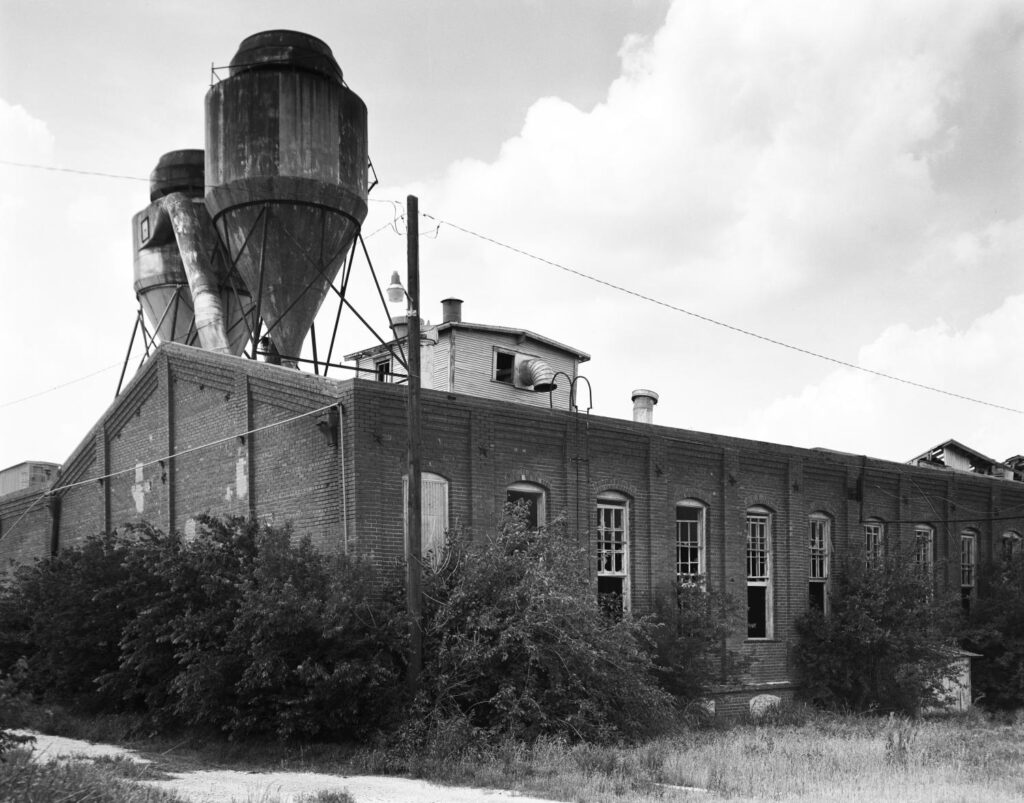
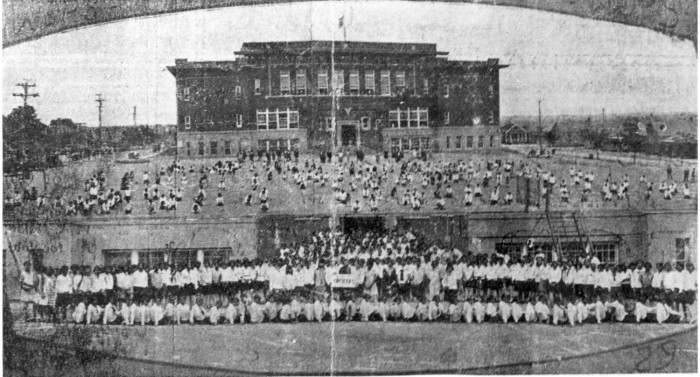
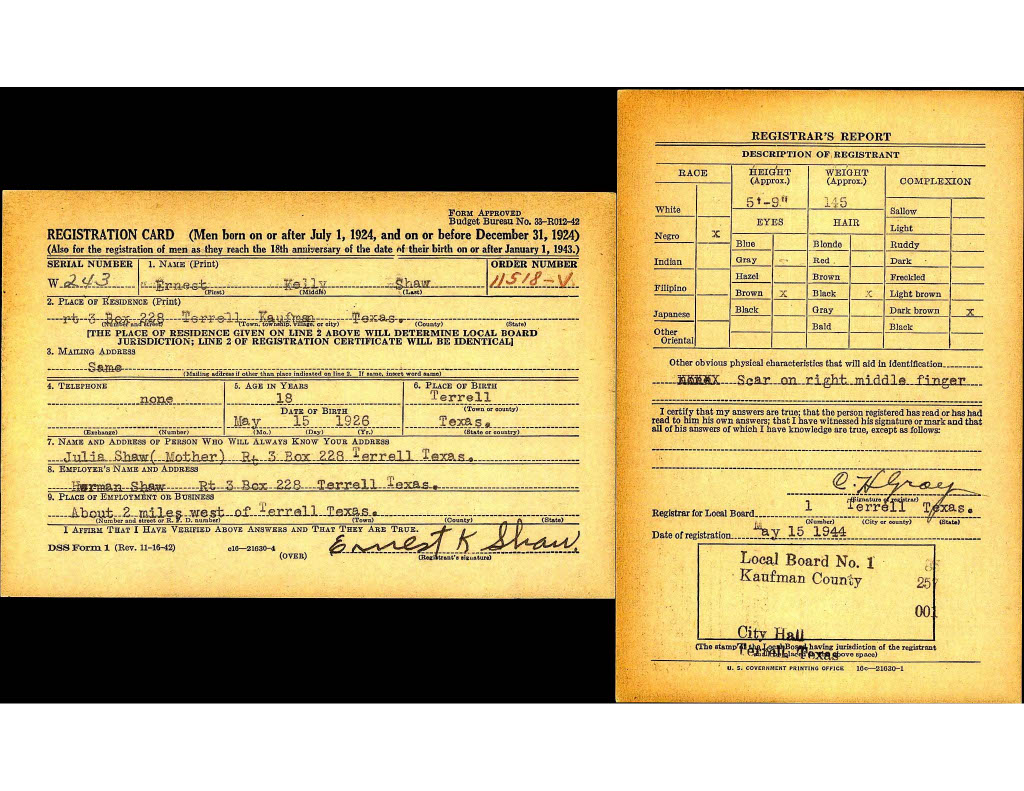
Homefront
Terrell, Texas, saw a transformation from a primarily agricultural landscape to an industrial area during the World War II and Korean War eras. A British flight training school operated in Terrell, Texas, from 1941 to 1945. The British government had a difficult time training their Royal Air Force in bad English weather. Terrell was chosen because of its vast expanse of farmland that made it a prime location for air training. Terrell residents housed some of the British training pilots and Shaw’s family often saw planes practicing maneuvers. The school was shuttered in 1949 to make room for an industrial park that included a small airport, an agricultural college, and a natural gas company, among other businesses that expanded during the Korean War.
Terrell, Texas, aided the Korean War effort on the homefront. The Ranger Boot and Shoe Manufacturing Company secured a contract to make and send 40,000 pairs of shoes a month to the U.S. Army in 1951. Hillsboro, Texas, about an hour from Terrell, grew castor beans for the Korean War effort. Castor bean oil was used for hydraulic brakes, lubrication for jet engines, and other military machinery.
Weekends in Terrell during the 1950’s included popular sports, such as baseball, bowling, boxing, and golf, as well as movies and bars. Establishments were still segregated during this time frame. As a result, Shaw’s family members were limited in where they were allowed to go based on their race. It was a common scene to see women wearing fashionable dresses in public with men wearing suits.
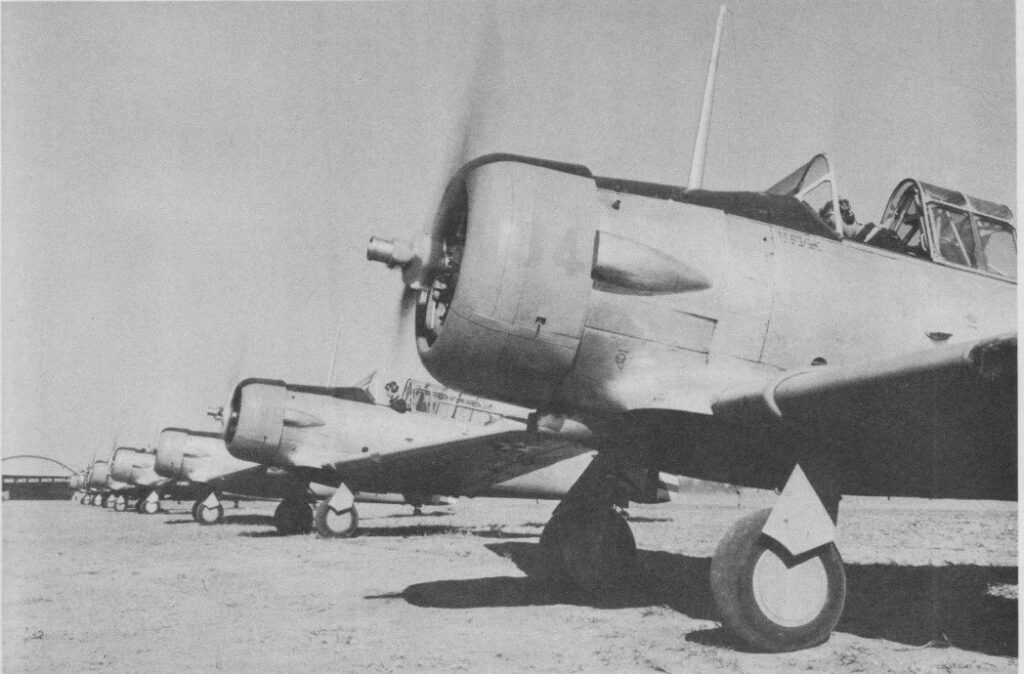

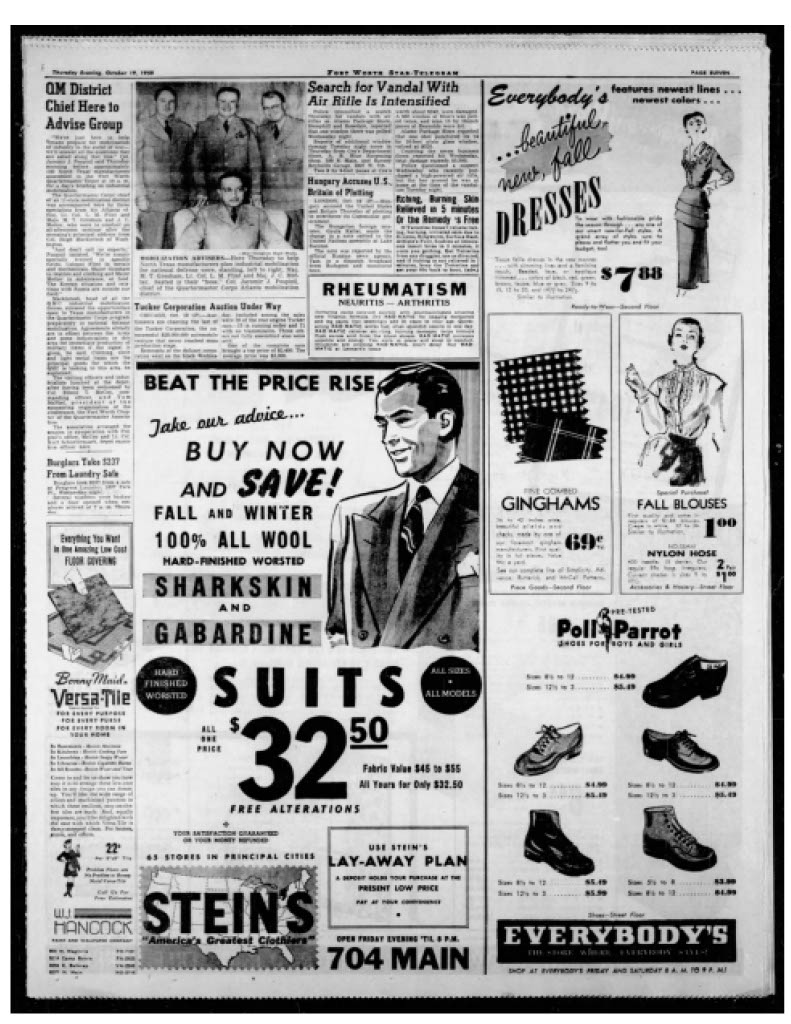
Military Experience
Ernest Kelly Shaw grew up admiring his brother, Charleston Shaw, who served in World War II. After Ernest graduated high school in May of 1944, he enlisted in the United States Army at age 17. He completed military processing at Fort Sam Houston in San Antonio, Texas, and basic training at Shepherd Field in Wichita Falls, Texas. From there, he was sent to Clovis, New Mexico where he was assigned to the United States Army Air Corps, a precursor to the United States Air Force.
During World War II, Shaw was stationed in Manila, Philippines, as a clerk for seven months. He did not see battle or fight during his duration serving in World War II. Along with clerical work, Shaw recalled, “I also went to school and took courses in music appreciation and boxing. It was a delightful experience.” Ernest Shaw did his job well and this work ethic allowed him to rise in rank. Shaw stated, “I was able to move up from private, to private first class, to corporal, to buck sergeant.” After this service, he resumed civilian life in November of 1946 and attended Tuskegee College (now Tuskegee University) in 1947 to study agronomy and serve in the Tuskegee Reserve Officer Training Corps (ROTC).
Shaw was called back to service in 1950, two years after President Harry S. Truman signed Executive Order 9981. The Korean War became the first war to integrate American troops abroad.
Shaw’s time in college led to an officer’s commission. He was one of 100 African American officers sent as replacement officers in the newly integrated Army. He was assigned to serve as a platoon leader in A Company, 31st Infantry Regiment, 7th Infantry Division.
Shaw remarked, “I felt confident because I had gone to Fort Benning for seventeen weeks of leadership training. This was the first time I had been given to command mixed troops in a situation in the field” and “I was given charge of Company A, 3rd platoon. It was a real opportunity to lead men in combat and lead men who were well trained and wanted to be led.” Ernest Kelly Shaw was one of the first African American soldiers to lead an integrated platoon in the United States Army.
Shaw commanded an integrated platoon and led them into combat missions. The main job for Shaw’s platoon was to follow the North Koreans and Chinese to stop their movements and protect their fellow soldiers. While on these missions, his group would put out listening posts for the allied forces. These were put in to alert soldiers of incoming enemy movements. Shaw recalled,
We were mostly running patrols while I was in combat. We ran patrols almost daily and nightly. We would go on prisoner capture missions and reinforce patrols, mostly platoon size or less. Invariably the goal was to get prisoners as quickly as possible, relieve them of any armaments, and pass them on to intelligence. My job was to capture and pass them on back. My job was to be sure to carry out the mission according to the order.
Shaw was a part of the relief force of the 2nd Infantry Division at Heartbreak Ridge and proved to be his most memorable time in the military. He recalled:
I was sitting on my bunk cleaning my carbine and .45 thinking about what might happen. We struck tents and went by truck and waited until nightfall relief. I don’t know what platoon I relieved. It was night relief. We were instructed to leave our weapons at the bottom of the hill and would relieve them on sight; that’s how close we were to the enemy. I was disposed on a river bed in an area called the Mundgungee Valley. I had almost a full complement of men. That night we fired all night. We had quad .5 machine guns firing up the valley and we did get hit, but we repulsed the enemy. The next day they moved the rest of my company into the valley. Heartbreak Ridge was quite an experience. We lost an innumerable number of men. We were on Hill 839- Heartbreak Ridge was a media concept.” Mr. Shaw remembered about the Heartbreak Ridge campaign, “That was one of the most devastating, it wasn’t just a battle but it was a period you know when that took place. You know as a lieutenant you are about what you are about and you don’t get the big picture. You’re just carrying out your role at that level so you don’t really know quite what’s going on. You just carry out orders and do what you’re told and try to survive.
Ernest Shaw was awarded a Silver Star at the Battle of Heartbreak Ridge for his bravery in leading a flamethrower team to destroy an enemy bunker while under heavy enemy fire. He recalled,
I was probably one of the first African Americans to be awarded the Silver Star at that time. General Thornburgh came up and they had a band and all that good stuff. But, you know I really had no interest in that. In fact, when they asked me to come down from up in the mountains where we were disposed my attitude was, ‘What the hell have I done now?’ Then I come down there, and they give me a pressed uniform, pressed fatigues, and I see this helicopter come down there and he pinned that medal on me and I am still wearing it. I was honored, of course, but I did no more than what was appropriate to do and another man would have done. I didn’t see it as anything out of the ordinary. I’m delighted and proud to have been so honored. You know because there were a lot of men and women of course who have earned outstanding awards or should be so honored. I say I represent other people who did much more if not the same, unsung, just one of those moments.
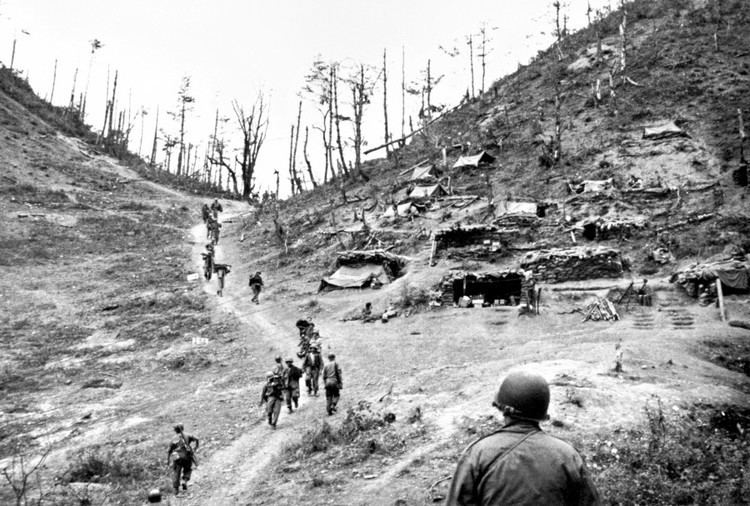

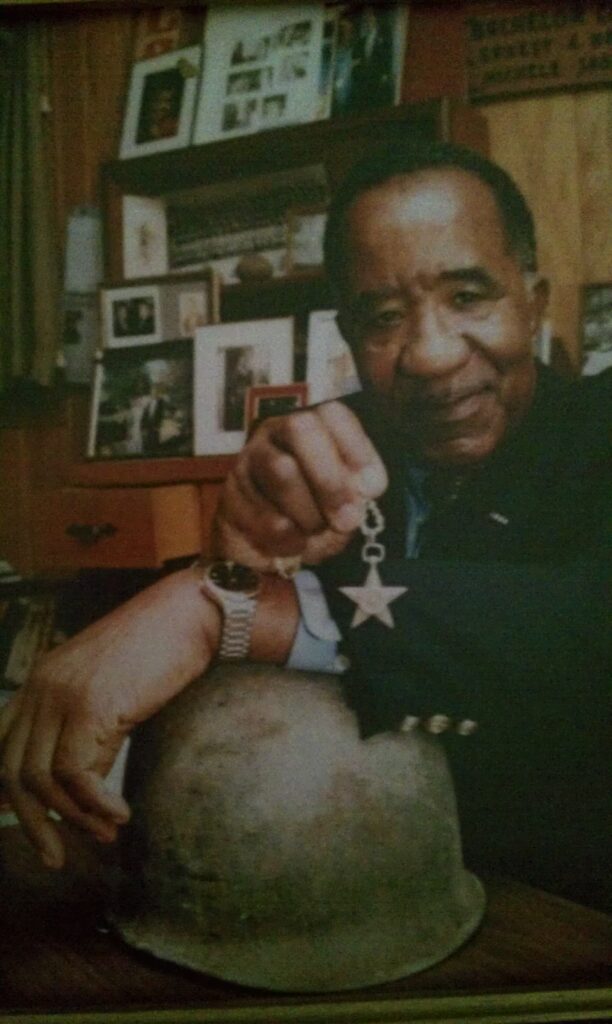
Veteran Experience
Ernest Shaw left the Korean War in 1952 and resumed studies at Tuskegee University in Alabama. He graduated in May 1953 with honors in agronomy. Mr. Shaw reflected, “I had a good experience with Tuskegee. I loved Tuskegee. Tuskegee, if you get the opportunity, it’s the history of that university has been awesome. It’s one of the things I tell people particularly of African descent that you ought to be afraid to die until you’ve gone to Tuskegee.” Mr. Shaw continued his studies at Rutgers University and graduated with honors in agronomy in 1955.
Shaw became a county agent in multiple counties in Texas. He taught farmers about timber and hosted 4-H Clubs. Over his career he worked in five different Texas counties, ending up in Harris County in Houston, Texas. He credited his passion for agriculture from his father, Herman Shaw. “My father was a farmer—a farmer’s farmer. Much of what I learned and studied about agriculture I had utilized in just active activity growing up on the Farm.”
During his career, he traveled to Liberia in Africa from 1956 to 1960. He took a hiatus from his job while in Liberia, but he returned to the position in 1960. Shaw explained, “They employed me primarily to develop a rubber plantation for the local communities. The function of my job was to teach the village farmers. Firestone had a large 50,000-acre rubber plantation and my job was to assist the local village farmers how to best grow and utilize and sell their crops for the most benefit.”
Shaw married Naomi Jewel Ellison on June 19, 1964, in McLennan County, Texas. Ernest and Naomi Shaw had one daughter, Michele, born on September 21, 1965. Ernest Shaw’s family values growing up transcended to his family as an adult. Naomi worked as an English teacher. He proudly shared a quote of Noami’s, “Education is the art of learning, and if you want to be educated, ask a teacher.”
Ernest Shaw was awarded the Tuskegee Alumni Merit Award in 1981 for his service as a county agent. The award contained a quotation from George Washington Carver, “It is not the style of clothing one wears. Neither the kind of automobile one drives. Not the amount of money one has in the bank that counts. These mean nothing. It is simply service that measures your success.”
Shaw retired from being a county agent on January 31, 1986. He served as a member of the Gathering of Eagles organization. This organization mentors youth about the benefits of joining the military for better stability in life and career. He said, “Not taking credit for it[,] but young people can move from one echelon to another if they are given guidance and counsel.”
Ernest Shaw donated many of his military artifacts to a VA Medical Center’s Regional Office in Houston, Texas, including his Silver Star and photographs of his time in the military. He said, “a lot of good men didn’t make it back and I have an obligation to them to make people aware of what we endured.”
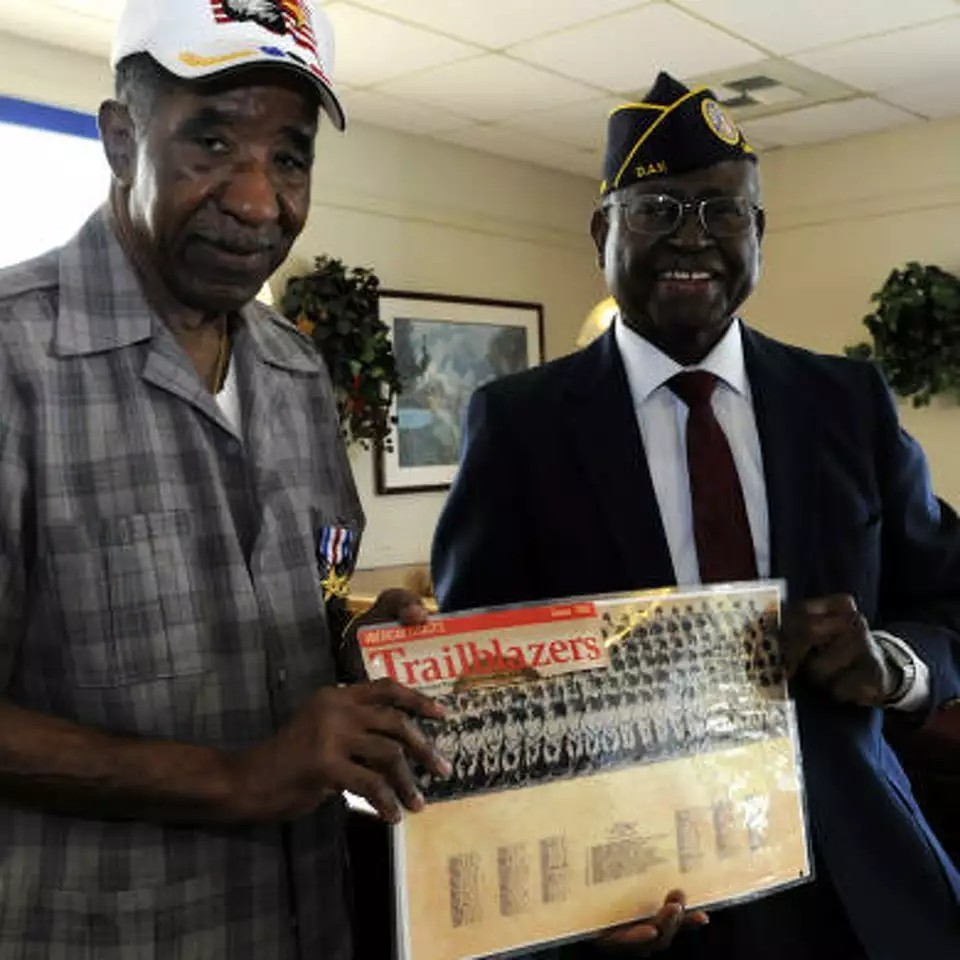
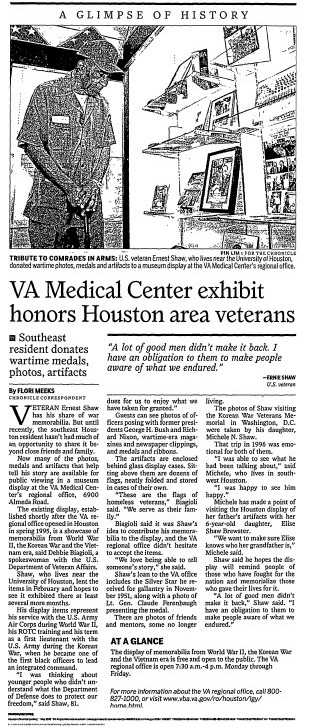
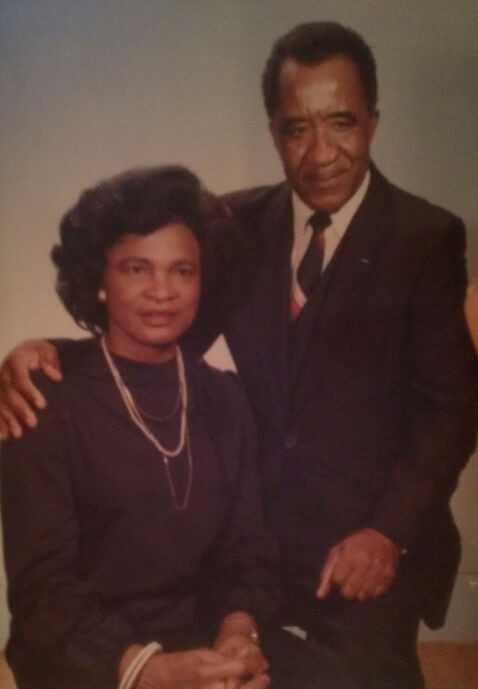
Commemoration
Ernest Kelly Shaw passed away on April 25, 2016, at 89 years old. He is buried with his wife Naomi at Houston National Cemetery in Houston, Texas.
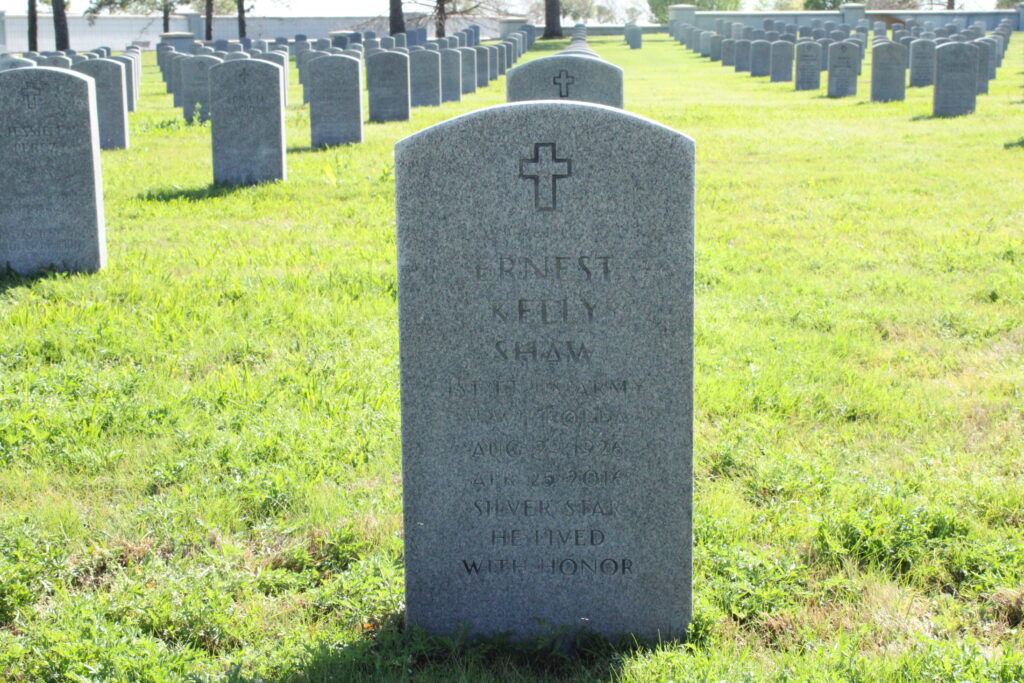
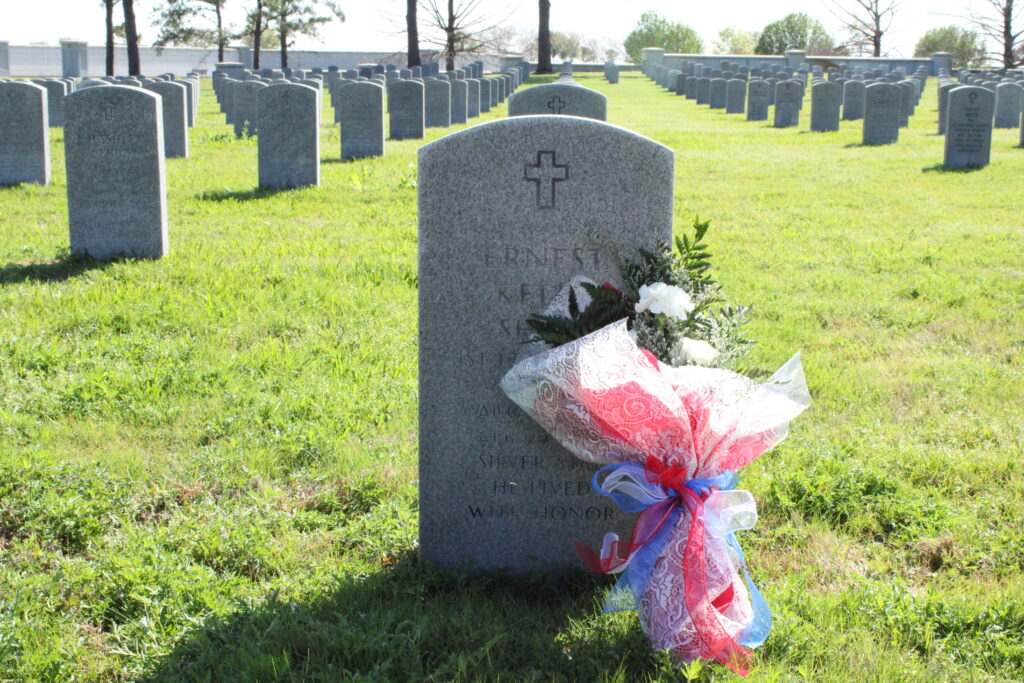
Bibliography
Primary Sources
“Armed Forces Industrial Mobilization Course Open.” Fort Worth Star-Telegram [Fort Worth, TX], May 13, 1952. Newspapers.com (636735231).
Dr. Ernest K. Shaw. Photograph. Southern Oral History Program Interviews, University of North Carolina Libraries, Digital Collections Repository. https://dcr.lib.unc.edu/record/85583915-d84a-4d06-b1fd-6f2cf3704949.
Ernest K. Shaw Collection. Veterans History Project, American Folklife Center, Library of Congress (AFC/2001/001/68787). http://www.loc.gov/item/afc2001001.68787/.
Ernest Kelly Shaw. Texas, Texas Births and Christenings, 1840-1981. Digital images. https://familysearch.org/.
Ernest Kelly Shaw. Texas, U.S. Select County Marriage Records, 1837-1965. https://ancestry.com/.
Ernest Kelly Shaw. Texas, World War II Draft Registration Cards, 1940-1947. Digital images. https:/ancestry.com.
Ernest Kelly Shaw, Veteran Eligibility Letter, Houston National Cemetery. Department of Veterans Affairs.
“Ernest Shaw helps other veterans.” Houston Chronicle [Houston, Texas], November 7, 2007. https://www.chron.com/news/article/Ernest-Shaw-helps-other-veterans-1825891.php.
“Experts Agree to List Ike As 34th U.S. President.” Fort Worth Star-Telegram [Fort Worth, TX], December 15, 1952. Newspapers.com (636734264).
Ford Advertisement. Fort Worth Star-Telegram [Fort Worth, TX], December 15, 1952. Newspapers.com (636734264).
“GI’s push for battlefield equality led to command, valor in Korea.” Houston Chronicle [Houston, TX], May 13, 1996. https://infoweb.newsbank.com/.
“A GLIMPSE OF HISTORY – VA Medical Center exhibit honors Houston area veterans – Southeast resident donates wartime medals, photos, artifacts.” Houston Chronicle [Houston, TX], May 1, 2008. infoweb.newsbank.com/.
Herman Nathanal Shaw. Texas, Texas Births and Christenings, 1840-1981. Digital images. https://familysearch.org/.
“Hill Farmers Plant Castor Bean Planting.” Fort Worth Star-Telegram [Fort Worth, TX], September 23, 1951. Newspapers.com (638135371).
I.M. Terrell High School. Photograph. 1921. University of North Texas Libraries (SCH 29.503). https://texashistory.unt.edu/ark:/67531/metapth9630/.
An Interview with Ernest K. Shaw. Interview by Annie Golden, Harris County Archives Oral History Collection. January 25, 2007. https://www.harriscountyarchives.com/Portals/1/Documents/oralHistories/OH05Shaw.Final.pdf.
Julia Eliza Anderson. Texas, Texas Births and Christenings, 1840-1981. Digital images. https://familysearch.org/.
“Lone Star Gas Advertisement.” Fort Worth Star-Telegram [Fort Worth, TX], November 20, 1950. Newspapers.com (637219573).
Michele Shaw. Texas, U.S. Birth Index, 1903-1997. Digital images. https://ancestry.com/.
“Motion Pictures Head List on Entertainment Intake; Bowling Alleys Second.” Fort Worth Star-Telegram [Fort Worth, TX], March 20, 1942. Newspapers.com (636502406).
Necchi Advertisement. Fort Worth Star-Telegram [Fort Worth, TX], December 6, 1953. Newspapers.com (637483615).
Ernest and Naomi Shaw. Photograph. Southern Oral History Program Interviews, University of North Carolina Libraries, Digital Collections Repository. https://dcr.lib.unc.edu/record/1dda1bfe-8e63-4ba1-81fa-e08e16c43a93.
Sanborn Fire Insurance Map from Terrell, Kaufman County, Texas. Map. 1921. Library of Congress. https://www.loc.gov/item/sanborn08780_008/.
Shaw Holding Silver Star. Photograph. Southern Oral History Program Interviews, University of North Carolina Libraries, Digital Collections Repository. https://dcr.lib.unc.edu/record/e86c0961-2d58-4552-bdc5-b7d1a63aa577#file-display.
“Small City Industry.” Dallas Morning News [Dallas, TX], September 28, 1950. https://www.newsbank.com.
“Stein’s Advertisement.” Fort Worth Star-Telegram [Fort Worth, TX], October 19, 1950. Newspapers.com (636727857).
Texas. Kaufman County. 1910 U.S. Census. Digital images. https://ancestry.com/.
Texas. Kaufman County. 1930 U.S. Census. Digital Images. https://ancestry.com/.
Texas. Kaufman County. 1940 U.S. Census. Digital Images. https://ancestry.com/.
Texas. Kaufman County. 1950 U.S. Census. Digital Images.https://ancestry.com/.
“VA Medical Center exhibit honors Houston area veterans.” Houston Chronicle [Houston, TX], May 1, 2008. https://www.newsbank.com.
Washer Bros. Advertisement. Fort Worth Star-Telegram [Fort Worth, TX], July 24, 1942. Newspapers.com (636967933).
Secondary Sources
Cline, David P. Twice Forgotten: African Americans and the Korean War, An Oral History. University of North Carolina Press, 2021.
“Ernest Kelly Shaw.” Find a Grave. Updated April 28, 2016. Accessed April 5, 2025. https://www.findagrave.com/memorial/161811892/ernest_kelly-shaw.
“Ernest Kelly Shaw.” National Cemetery Administration. Accessed September 29, 2024. https://www.cem.va.gov/nationwide-gravesite-locator/.
“Ernest Kelly Shaw.” Veterans Legacy Memorial, U.S. Department of Veterans Affairs. Accessed April 5, 2025. https://www.vlm.cem.va.gov/ERNESTKELLYSHAW/D946AB7.
Guttman, John. “Looking at the Korean War, 71 Years Later.” HistoryNet. December 5, 2020. https://www.historynet.com/korean-war-images/.
Haeussler, Bailey. “Burnett, William Henry (1872-1944).” Texas State Historical Association. Updated May 15, 2013. Accessed October 19, 2024. https://www.tshaonline.org/handbook/entries/burnett-william-henry.
Hart, Brian. “Kaufman County.” Texas State Historical Association. Updated November 17, 2020. Accessed November 29, 2024. https://www.tshaonline.org/handbook/entries/kaufman-county.
“History & Mission.” No 1 British Flying Training School Museum. Updated 2024. Accessed November 29, 2024. https://www.bftsmuseum.org/world-war-ii-museum-terrell-texas/.
“History.” Terrell Chamber of Commerce and Convention and Visitors Bureau. Last modified March 8, 2020. Accessed November 27, 2024. https://www.terrelltexas.com/visit-terrell/history/.
“Korean War – the Battle Of Heartbreak Ridge.” Together We Served. Accessed January 17, 2025. https://blog.togetherweserved.com/korean-war-the-battle-of-heartbreak-ridge/.
Livingston, Katherine. [Industrial Building Cotton Oil Mill, (East Elevation)]. Photograph. March 1981. University of North Texas Libraries. https://texashistory.unt.edu/ark:/67531/metapth664208/.
“Naomi Jewel Ellison Shaw.” Find a Grave. Updated February 25, 2000. Accessed April 5, 2025. https://www.findagrave.com/memorial/1173179/naomi_jewel_ellison-shaw.
“No. 1 British Flying Training School Museum, Inc.” Texas Historical Commission. https://texastimetravel.com/directory/no-1-british-flying-training-school-museum-inc/.
Stoltz, Jack. Terrell, Texas, 1873-1973; from Open Country to Modern City. Naylor Co, 1973.
Stoltz, Jack. “Terrell, TX.” Texas State Historical Association. Updated May 14, 2019. Accessed November 29, 2024. https://www.tshaonline.org/handbook/entries/terrell-tx.
“William Henry Burnett Marker.” The Historical Marker Database. September 3, 2016. https://www.hmdb.org/m.asp?m=97646.
This profile was funded by a grant from the United States Department of Veterans Affairs. The opinions, findings, and conclusions stated herein are those of the author and do not necessarily reflect those of the United States Department of Veterans Affairs.

